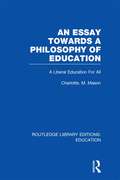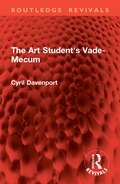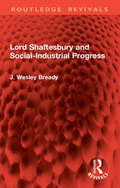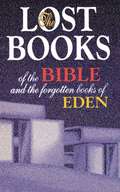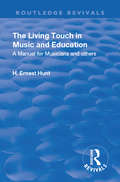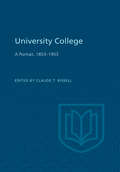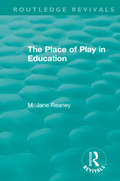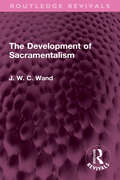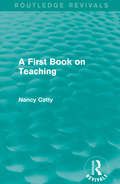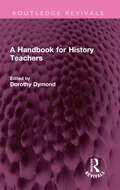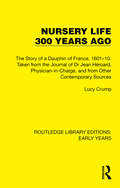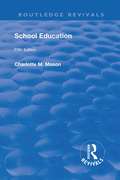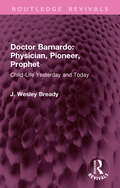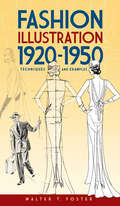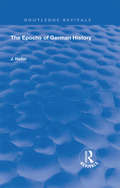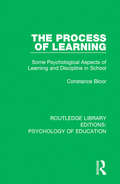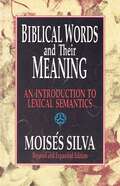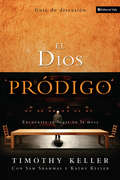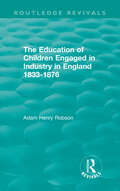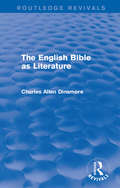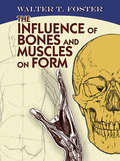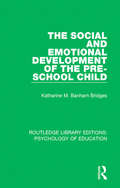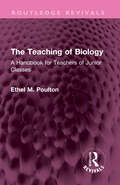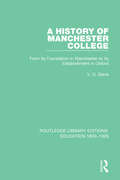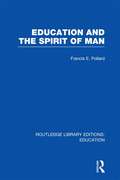- Table View
- List View
An Essay Towards A Philosophy of Education: A Liberal Education for All (Routledge Library Editions: Education)
by Charlotte M MasonThis was the last and most important and comprehensive work of Charlotte Mason, (founder of the Parents’ National Educational Union). For more than half a century the practical results of her original thought on education could be seen in all parts of the world in the Charlotte Mason Method and the Parents’ Union Schools.
The Art Student's Vade-Mecum (Routledge Revivals)
by Cyril DavenportOriginally published in 1925, The Art Student’s Vade-Mecum is a pocket guide for students and academics alike, to the world of painting and drawing. From materials to painters, it was everything a new art student in the early twentieth century would need. Today it can be read in its historical context.
Lord Shaftesbury and Social-Industrial Progress (Routledge Revivals)
by J. Wesley BreadyOriginally published in 1926, this volume is much more than a biography of an outstanding politician, social reformer and philosopher. It provides an analysis of the history of social conditions in England during the nineteenth century, as well as a discussion of the development of social affairs and the inertia of political psychology. The role that faith and religion played in motivating Lord Shaftesbury’s desire for social reform is also discussed as is the ways in which he and John Wesley transformed the social and ethical ideas of England to enshrine in law many of the working conditions that we take for granted today such as defined hours of work and rest periods.
Lost Books of the Bible and the Forgotten Books of Eden
by Thomas NelsonThough apocryphal in nature, these books--suppressed by the Church Fathers--are fascinating and beautifully written. Here you can read for yourself many of the manuscripts which were excluded form the Cannon of Scripture, and discover new appreciation for those which were chosen.Now in tradepaper and ebook formats!
Revival: A Manual for Musicians and Others (Routledge Revivals)
by H. Ernest HuntThese chapters contain the subject matter of a year’s course of thirty lectures which have now, for several years past, been given in connection with the Training School for Music Teachers, London, W. I.
University College: A Portrait, 1853-1953
by Claude BissellFor a century University College has had a profound and continuous influence on the cultural development of Canada. The authors of this volume show us University College as a political and educational institution; as a physical structure that has aroused admiration and scholarly curiosity; as the home of a long line of great teachers and scholars, and of a student body diverse in its origins and spirited in its attitudes; and finally, as the embodiment of an educational idea that transcends curricula and prescriptions.
The Place of Play in Education (Routledge Revivals)
by M. Jane ReaneyOriginally published in 1927, this was a book written specially for teachers and parents, based upon the writer’s practical experience and research. It deals with the fundamental importance of play in the child’s development and as a basis for all education. A set of 74 games, arranged by Miss Amy Whateley, is appended, in four groups according to the four play periods of childhood. Today it can be read and enjoyed in its historical context.
The Development of Sacramentalism (Routledge Revivals)
by J. W. WandFirst published in 1928, The Development of Sacramentalism traces the history of the fundamental presuppositions upon which the doctrine of sacraments is built from primitive religions, through the Old Testament and the Mystery Cults. This book will be of interest to students of history and religion.
A First Book on Teaching (Routledge Revivals)
by Nancy CattyFirst published in 1929, this book is a beginner's guide to the practice of teaching. The preparation and giving of lessons, the function of class teaching, sectionizing and individual work, the art of happy relations between class and teacher, the foundations of school tone, and the tests of a good curriculum are discussed and illustrated from school and training college experience. Use is made of the reader's memories of school-days, and the exercises, an integral part of the book, provide a critical reading. A study of the text as a basis for discussion makes an excellent preparation for teaching.
A Handbook for History Teachers (Routledge Revivals)
by Dorothy DymondFirst Published in 1929 A Handbook for History Teachers is an attempt on the part of a number of teachers (many of them members of the S. E. London branch of the Historical Association) to offer some practical help in the choice of historical material for children. It discusses themes like schemes of work in elementary junior and senior schools, textbooks for pupils under fifteen, class library books for pupils under fifteen, book lists for teachers, and sources for the preparation of history stories by the teacher. This is an essential read for history teachers and education.
Nursery Life 300 Years Ago: The Story of a Dauphin of France, 1601–10. Taken from the Journal of Dr Jean Héroard, Physician-in-Charge, and from Other Contemporary Sources (Routledge Library Editions: Early Years)
by Lucy CrumpOriginally published in 1929, Nursery Life 300 Years Ago is about the childhood of a seventeenth-century Dauphin of France, taken from the journal of Dr. Jean Heìroard, physician-in-charge and other contemporary sources, which is used as a medium for describing the education, toys and other social aspects of childhood at that time. A fascinating glimpse into the historic study of children.
Revival: Volume III (Routledge Revivals)
by Mason M. CharlotteSchool Education, the third volume of Charlotte Mason's Homeschooling Series, consists of thoughts about the teaching and curriculum of children aged 9-12, either at school or at home. She suggests that parents should practice what she calls "masterly inactivity"-not neglectful or permissive parenting, but simply allowing children to work things out for themselves, do things for themselves, learn from their own mistakes, and to have time for free play, and space for spontaneity. Charlotte Mason uses "living books" instead of dry textbooks; in this book, she discusses what kinds of books to look for in each subject, and how to use them to teach children to love knowledge and become real readers and lifelong learners. Charlotte Mason was a late nineteenth-century British educator whose ideas were far ahead of her time. She believed that children are born persons worthy of respect, rather than blank slates, and that it was better to feed their growing minds with living literature and vital ideas and knowledge, rather than dry facts and knowledge filtered and pre-digested by the teacher. Her method of education, still used by some private schools and many homeschooling families, is gentle and flexible, especially with younger children, and includes first-hand exposure to great and noble ideas through books in each school subject, conveying wonder and arousing curiosity, and through reflection upon great art, music, and poetry; nature observation as the primary means of early science teaching; use of manipulatives and real-life application to understand mathematical concepts and learning to reason, rather than rote memorization and working endless sums; and an emphasis on character and on cultivating and maintaining good personal habits. Schooling is teacher-directed, not child-led, but school time should be short enough to allow students free time to play and to pursue their own worthy interests such as handicrafts.
Doctor Barnardo: Child-Life Yesterday and Today (Routledge Revivals)
by J. Wesley BreadyOriginally published in 1930, the main focus of this book is the study of the man and the homes for children which he founded but against a backdrop of the unparalleled era of social reform, in which children were finally recognized as social assets of incalculable worth. Barnardo’s work is therefore not treated as an isolated phenomenon. It is analysed for its profound significance as a pioneer movement in child-welfare and its legacy is visible as much in the 21st century as in the 19th. Where Wilberforce liberated enslaved people, and Shaftesbury the industrial worker, so Barnardo immeasurably helped thousands of homeless children.
Fashion Illustration 1920-1950: Techniques and Examples (Dover Art Instruction)
by Walter T. FosterComprehensive and user-friendly, this volume combines four vintage instructional manuals by Walter T. Foster, the world-famous art teacher and publisher. In addition to explaining the principles of figure drawing, it provides a handy retrospective of fashions for men, women, and children from the first half of the twentieth century. This authentic guide to vintage styles features a splendid range of apparel, from ladies' lingerie and evening gowns to men's business suits and children's play clothes. Artists at every level of experience will benefit from tips on portraying figures in motion and at rest, along with advice on accurate renditions of clothing folds and patterns. Step-by-step drawings with helpful comments explain a variety of techniques, including pencil, pen, wash, and opaque.
The Epochs of German History (Routledge Revivals #18)
by J. HallerOriginally published in 1930. This book is not intended to be a discussion on German history, but to talk about its epochs, a period in which some fresh beginning is made, some fresh determining element enters, some event occurs to give a new direction to the course of history. The book is concerned with the critical moments of German history, the turning points in its course. Those are what we want to consider, wnd also to select as points of vantage from which we may survey the development of the German nation, viewing the panorama section by section.
The Process of Learning: Some Psychological Aspects of Learning and Discipline in School (Routledge Library Editions: Psychology of Education)
by Constance BloorOriginally published in 1930, this book was designed to meet the needs of students in Training Colleges. It is the outcome of first-hand experience of the difficulties encountered by students in the subject of educational theory and its application to the problems of the classroom at the time. It was the hope of the writer that this book may help the student to find a profitable connection between the theory of the lecture room and the problems of the school classroom.
Biblical Words and Their Meaning: An Introduction to Lexical Semantics
by Moisés SilvaWhen first published in 1983, Biblical Words and Their Meaning broke new ground by introducing to students of the Bible the principles of linguistics, in particular, on lexical semantics -- that branch that focuses on the meaning of individual words. Silva's structural approach provides the interpreter with an important lexical tool for more responsible understanding of the biblical text and more effective use of standard exegetical resources. This revised edition includes a bibliographical essay by Silva, "Recent Developments in Semantics," and an appendix by Karen H. Jobes, "Distinguishing the Meaning of Greek Verbs in the Semantic Domain for Worship," that provides the reader with a substantive example of lexical study.
El Dios pródigo, Guía de discusión: Encuentra tu lugar en la mesa
by Timothy KellerDos hijos, uno se sometió a las reglas religiosamente y el otro las rompió todas. Un padre que amaba a ambos hijos perdidos más allá de lo que ellos podían imaginar. Descubre la profundidad y el alcance de la gracia de Dios en El Dios prodigo. La Guía para discusión Dios prodigo, te ayudara a descubrir, personalizar y aplicar una perspectiva que cambiara tu vida del libro y DVD Dios prodigo. En seis sesiones cautivantes, el pastor y autor éxito de venta de la lista New York Times, Timonty Keller, abre tus ojos al poderoso mensaje de la parábola más conocida, y la menos entendida de Jesús. El Dios prodigo es una revelación del mismo corazón del evangelio: El amor radical de Dios por los pecadores de toda clase. Llevándote mas alládel enfoque tradicional del hijo prodigo, Keller te ayuda a comprender mejor cada uno de los protagonistas de la parábola de Jesús: El hijo menor profano, el hijo mayor moralista, y el padre quien derrocha su amor en ambos. Dentro de esta guía, investigaras preguntas para discusión en grupo y reflexión personal, y ejercicios que te ayudaran a experimentar las verdades de la parábola de Jesús en tu propia vida. El evangelio no es religión ni irreligión, más bien algo completamente diferente. Así seas un creyente devoto o un escéptico, el Dios prodigo te retara a ver el cristianismo de una manera completamente nueva. Los títulos de las sesiones incluyen los siguientes: La parábola La gente alrededor de Jesús Los dos hijos perdidos El hermano mayor El verdadero hermano mayor El banquete del padre Diseñado para uso con el libro y DVD Dios prodigo.
The Education of Children Engaged in Industry in England 1833-1876 (Routledge Revivals)
by Adam Henry RobsonOriginally published in 1931, this title looks at the education received by children working in industry in England between 1833 and 1876. The industrial revolution created more demand for child labour than ever before, but there were few laws to protect the children involved. School was not compulsory for children until the 1880s, but there were new laws brought in and enforced to reduce the numbers of hours they were allowed to work in industry in 1833 and subsequently in 1844. This title deals with the education of children during that time and the implications of the laws introduced.
The English Bible as Literature (Routledge Revivals)
by Charles Allen DinsmoreThe religious associations surrounding the Bible make it difficult for the general reader to appreciate, in its full purity, the value which the Scriptures bear as literature, and as an epic in no way inferior, in cultural worth, to the greatest works of Greece and Rome. Dealing as it does with elementary passions and principles, the English Bible is, in the author’s view, the greatest book of all the ages. This book, first published in 1931, will be of interest to students of literature and religious studies.
The Influence of Bones and Muscles on Form (Dover Anatomy for Artists)
by Walter T. FosterA thorough acquaintance with human anatomy is a valuable asset for artists wishing to master figure drawing. This single-volume treatment combines separate treatises on drawing muscles and bones. Each page features multiple illustrations, accompanied by extensive descriptions offering lucid explanations of bone and muscle placement, function, and artistic re-creation.
The Social and Emotional Development of the Pre-School Child (Routledge Library Editions: Psychology of Education)
by Katharine M. Banham BridgesOriginally published in 1931, the study reported in this book was undertaken as part of the research programme of the Canadian National Committee for Mental Hygiene. It represents a systematic inquiry into the social and emotional behaviour of pre-school children as observed from day to day in a nursery school. The study extended over a period of three years, and it concerned children between the ages of two and five years who were in attendance at the McGill University Nursery School and child laboratory. It can now be read and enjoyed in its historical context.
The Teaching of Biology: A Handbook for Teachers of Junior Classes (Routledge Revivals)
by Ethel M. PoultonFirst published in 1931, the original blurb reads: "A practical handbook for those who are engaged in teaching elementary biology (Nature Study) to children of 10-13 years. Part I is devoted to general methods of teaching the subject. Part II consists of subject matter suitable for lessons, together with suggestions as to practical work and classroom procedure." It was hoped that this work would help the move away from the tradition, still prevalent at the time, where observation of minute details and absence of associated physiological work left the children with little interest in the subject. This book would contribute to a type of teaching where more regard was paid to the ‘livingness’ of the organism, resulting in the deepening of the pupil’s enjoyment of the beauty of animate nature. Today it can be read in its historical context.
A History of Manchester College: From its Foundation in Manchester to its Establishment in Oxford (Routledge Library Editions: Education 1800-1926 #3)
by V. D. DavisThis book, first published in 1932, tells the progress of Manchester College, founded in Manchester in 1786, and since 1889 established at Oxford, as a postgraduate School of Theology and place of training for the ministry of religion. This title will be of interest to students of history and education.
Education and the Spirit of Man (Routledge Library Editions: Education #151)
by Francis PollardThis volume was the Swarthmore Lecture for 1932, one of an annual series of lectures delivered by and for members of the Society of Friends (Quakers). The lecture discusses the place of education and moral philosophy in the world of the early twentieth century, as well as the place of religious discipline in education.
